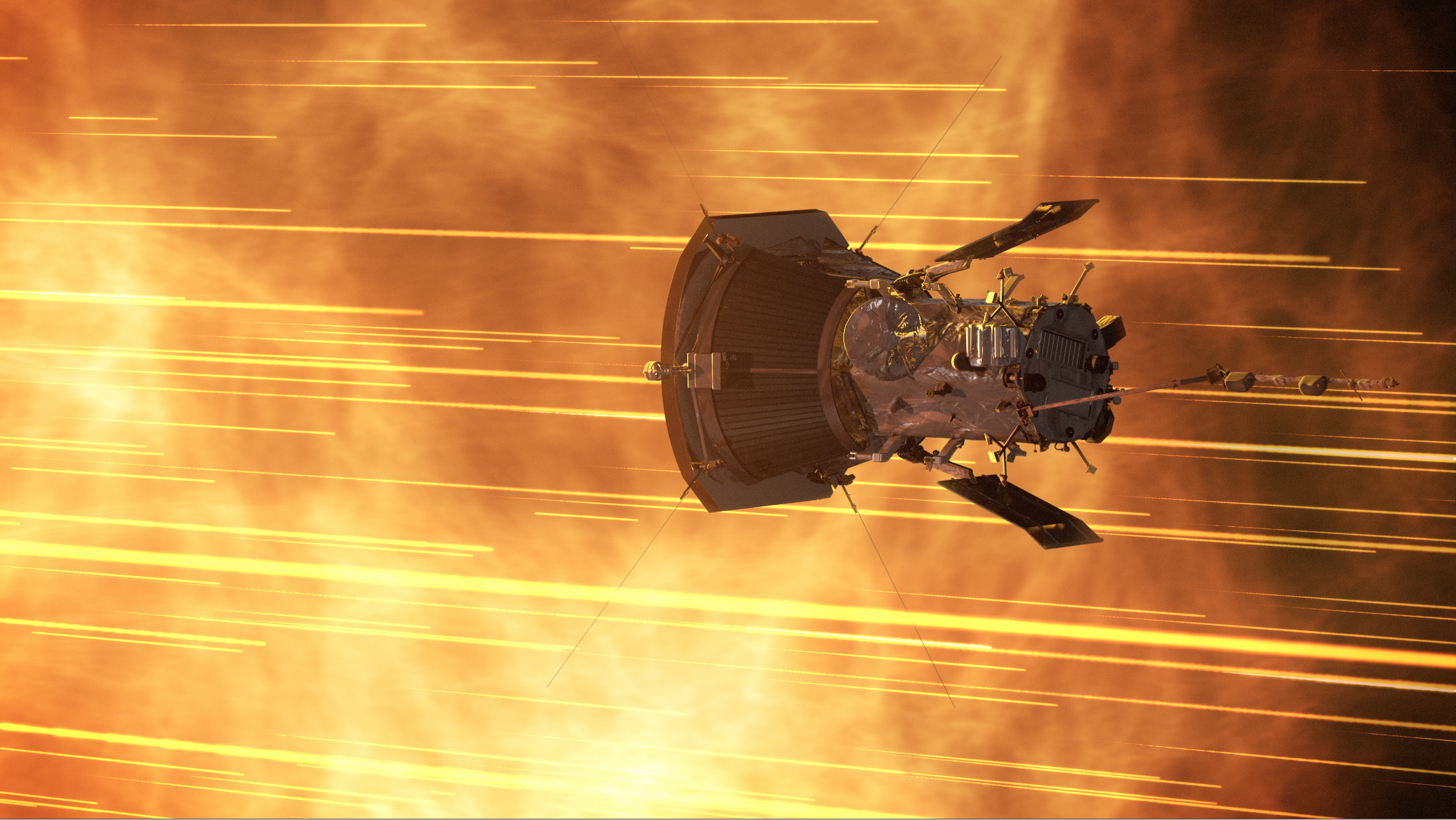NASA Is About to Launch the Fastest Spacecraft in History. Target: The Sun!
Update for Aug. 11: NASA and the United Launch Alliance have postponed the Parker Solar Probe launch by at least 24 hours, to Aug. 12, due to an issue with the probe's Delta IV Heavy rocket. Read our full story here.
Early tomorrow morning (Aug. 11), weather permitting, NASA will launch its newest spacecraft, called the Parker Solar Probe, aboard a huge United Launch Alliance Delta IV Heavy rocket — and by December 2024, it will become the fastest spacecraft ever.
That's when the probe will reach its closest point to the sun, coming within 3.83 million miles (6 million kilometers) of our star. At that point, the spacecraft will be speeding along at a whopping 430,000 mph (692,000 km/h). On Earth, that would be the equivalent of traveling from Washington, D.C., to Tokyo in less than a minute — or from D.C. to Philadelphia in less than a second.
But the team behind the spacecraft is surprisingly blasé about the record-breaking feat. "Designing something to go fast in space is pretty much the same as you would design it to go slow in space; space has nothing to really impede its progress," Parker Solar Probe project manager Andrew Driesman, of the Johns Hopkins University Applied Physics Laboratory, said during a NASA news conference yesterday (Aug. 9). "The spacecraft doesn't know it's going fast." [The Greatest Missions to the Sun]
Nevertheless, it won't be entirely smooth sailing, since the probe won't be the only thing moving incredibly quickly. The Parker Solar Probe will also be surrounded by what scientists call a hypervelocity dust environment — a slew of tiny, fast-moving particles, some of which will inevitably bang into the spacecraft. The probe carries Kevlar blankets to protect itself from those impacts.
During its closest approach to the sun, the Parker Solar Probe will leave other speedy spacecraft eating metaphorical dust. For comparison, the Voyager 1 spacecraft, launched back in 1977, is currently traveling at about 38,000 mph (61,000 km/h), according to NASA — less than 10 percent of the Parker Solar Probe's peak speed.
When it slipped into orbit around Jupiter in July 2016, NASA's Juno probe briefly clocked in at 165,000 mph (266,000 km/h), making it the fastest spacecraft to date. That was achievable thanks, in part, to the gas giant's own gravity — which some sticklers claim is cheating.
Breaking space news, the latest updates on rocket launches, skywatching events and more!
However, in terms of so-called heliocentric velocity only — the speed with regard to the sun, without the influence of planets — two other spacecraft currently hold the record: Helios I and II, two 1970s missions that slipped closer to the sun than Mercury is to our star, reaching speeds of about 150,000 mph (241,000 km/h).
But because things orbit faster the closer in, sailing within 4 million miles (6.4 million kilometers) of the visible surface of the sun means that the Parker Solar Probe will almost triple that speed. Better wave goodbye to it while you can.
Editor's note: NASA's Parker Solar Probe will launch Saturday, Aug. 11, at 3:33 a.m. EDT (0733 GMT). You can watch the launch live here on Space.com beginning at 3 a.m. EDT (0700 GMT), courtesy of NASA TV. Visit Space.com Saturday for complete coverage of NASA's Parker Solar Probe launch.
Email Meghan Bartels at mbartels@space.comor follow her @meghanbartels. Follow us @Spacedotcom, Facebook and Google+. Original article on Space.com.

Meghan is a senior writer at Space.com and has more than five years' experience as a science journalist based in New York City. She joined Space.com in July 2018, with previous writing published in outlets including Newsweek and Audubon. Meghan earned an MA in science journalism from New York University and a BA in classics from Georgetown University, and in her free time she enjoys reading and visiting museums. Follow her on Twitter at @meghanbartels.

